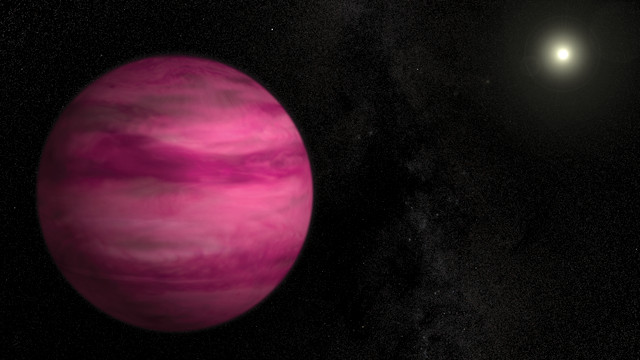
by Rachel Crowell Friday, August 3, 2018

Obliquity and eccentricity affect the habitability of exoplanets like GJ 504b, the lowest-mass planet ever directly imaged around a star like the sun. Credit: NASA/Goddard/S. Wiessinger.
Finding habitable Earth-like planets may be even more challenging than previously thought, suggests a recent Astronomical Journal study looking at how the planetary obliquity, or tilt relative to an orbital axis, and orbital eccentricity affect the habitability of planets orbiting G-dwarf stars — which are similar to the sun.
Scientists led by Russell Deitrick, an astrophysicist at the University of Bern in Switzerland, modeled how orbitally induced climate variations on exoplanets influence the planets’ climates. The researchers found that these cycles can induce rapid and cataclysmic “snowball” states, causing oceans to freeze, which greatly reduces the possibility of life on these planetary surfaces.
The team “found that planets in the habitable zone could abruptly enter snowball states if the eccentricity or the semi-major axis variations — changes in the distance between a planet and star over an orbit — were large or if the planet’s obliquity increased beyond 35 degrees,” Deitrick said in a statement.
Although some previous studies have found that increases in eccentricity can rescue a planet from a snowball state, or that obliquity variations or high obliquity can even warm planets, these prior studies lacked a “complete synthesis of orbital evolution, obliquity evolution, and climate, including the effects of ice sheets on oceans,” the researchers wrote.
This study demonstrates the crucial role that orbital dynamics plays in planetary habitability, the authors say. The results can be used to narrow future searches for habitable planets, to focus on ones with obliquities and eccentricities that are conducive to life. “If we have a planet that looks like it might be Earth-like, for example, but modeling shows that its orbit and obliquity oscillate like crazy, another planet might be better for follow-up,” Deitrick said.
© 2008-2021. All rights reserved. Any copying, redistribution or retransmission of any of the contents of this service without the expressed written permission of the American Geosciences Institute is expressly prohibited. Click here for all copyright requests.